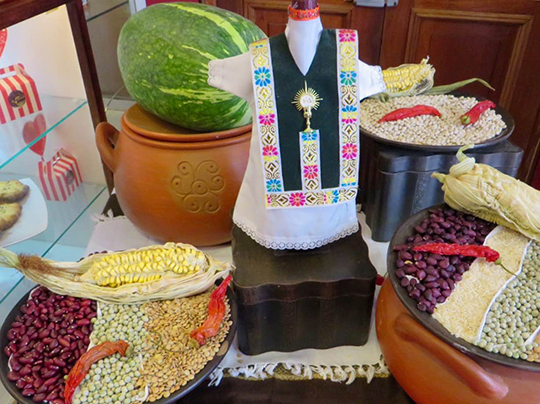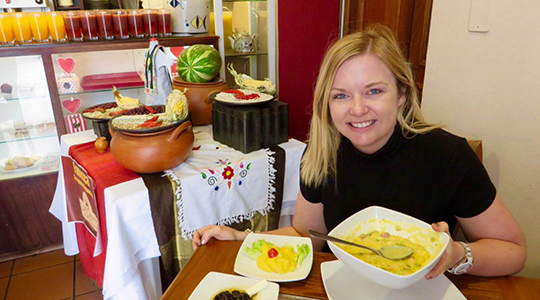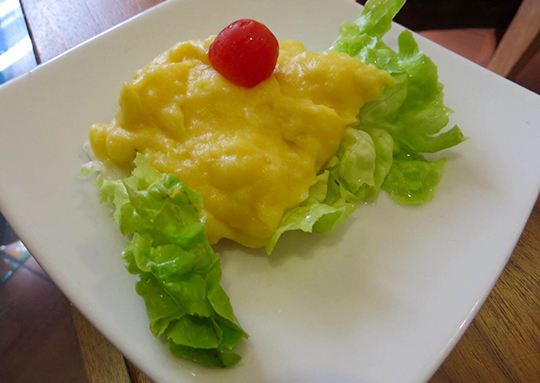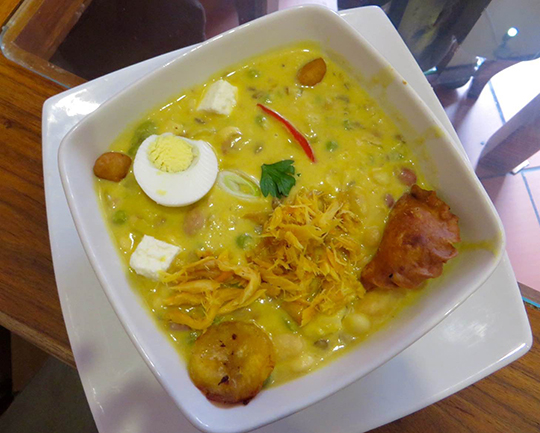Easter is a great time to visit Ecuador! With such a large Catholic population, the week known as Holy Week, from Palm Sunday to Easter Sunday, is a time of celebration and it is common to come across festivals, parades and street music.
But this Easter I discovered another benefit to being in Ecuador during holy week – Fanesca! In 10 minutes of walking around town I had seen Fanesca advertised in about 90% of the restaurants I walked past, but I had no idea what it was. Being in a country that regularly has guinea pig on the menu I decided I would do some research before attempting to tuck in.
My guide, Raul, informed me that it was a traditional dish only served during Holy Week and that it contained lavish ingredients as it was the dish that many Catholics made at the end of Lent, a period when they often gave up rich foods.
The dish itself is a rich soup traditionally made by mixing 12 grains and beans (which represent the 12 apostles of Jesus) with pumpkin, squash, milk and salted cod. It is then garnished with boiled eggs, cheese, fried plantain and mini empanadas. I discovered that the city of Quito has an annual competition to see which restaurant in town served the best Fanesca. 580 restaurants had entered the competition and I went to taste my first Fanesca at one of the 20 restaurants in town that had made the finals, San Ignacio Restaurant, close to the old town region.

Having first had the chance to see the raw ingredients, I discovered this clearly wasn’t a one pot soup mix. The mix of grains and beans traditionally used consisted of lentils, corn, peas, rice, fava beans and a bunch of others that I didn’t recognise but was reliably informed came from the high Andes and Amazon Jungle regions in Ecuador. Each of these ingredients need to be boiled separately before being added to the soup. I say soup, but in my book Fanesca is much more like a stew as it is extremely thick and you would be hard pushed to drink it from a cup (the defining difference between soups and stews!). It is packed full of flavour and different textures, from the tough salted cod to the crunchy spiced empanadas and it really was fantastic.

I also discovered that it is usually served with 2 other courses. Unfortunately I discovered this after I had filled up on the first course of Fanesca. The second course is called Molo – a dish which from what I could see was simply a very tasty cheesy mash potato dish served with some salad. Then higos con queso for dessert ensures that you need to loosen your belt before leaving the table. Higos con Queso consists of figs cooked in sugar, cinnamon and cloves and served with a small amount of soft cheese.

For anyone intending to visit Ecuador during Holy Week, I highly recommend this traditional dish which unfortunately is hard to find outside of Ecuador itself and even harder to find at any other time of year other than Easter. So make sure you don’t miss the small window of opportunity to indulge in a Fanesca feast.

Visit Ecuador today for your own foodie experience!

